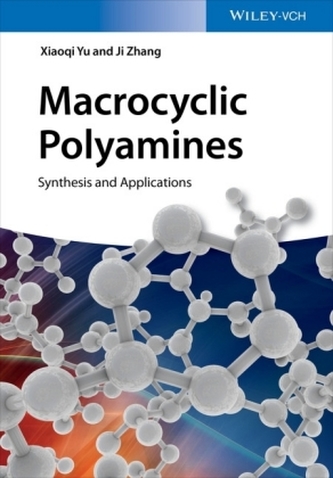1. Introduction
1.1 Classification of macrocyclic polyamines
1.2 Properties of macrocyclic polyamines
1.3 Application of macrocyclic polyamines
2. Synthetic Methods of Macrocyclic Polyamines
2.1 Ring-closure modes
2.1.1 The intramolecular cyclization
2.1.2 The 1+1 cyclization
2.1.3 The 2+2...
prečítať celé
1. Introduction
1.1 Classification of macrocyclic polyamines
1.2 Properties of macrocyclic polyamines
1.3 Application of macrocyclic polyamines
2. Synthetic Methods of Macrocyclic Polyamines
2.1 Ring-closure modes
2.1.1 The intramolecular cyclization
2.1.2 The 1+1 cyclization
2.1.3 The 2+2 cyclization
2.1.4 Other cyclization modes
2.2 The synthesis of saturated macrocyclic polyamines
2.2.1 Ring closure using sulfonamides
2.2.2 The removal of tosyl protecting groups
2.2.3 The use of easily removable protecting group
2.2.4 Special procedures for tetraza macrocyclic compounds
2.3 Aromatic subunits-containing polyazamacrocycles
2.3.1 Alkylation of sulfonamide salts with dihalomethyl arenes
2.3.2 Metal-catalyzed N-arylation
2.4 Macrocyclic polyimines (Schiff bases)
2.4.1 Metal template reactions
2.4.2 Template free cyclization
2.5 Macrocyclic amides
2.5.1 The crab-like cyclization
2.5.2 Diacids-diamines condensation
2.6 Cryptands
2.6.1 Coupling of the preformed macrocycles
2.6.2 Direct organic synthesis
2.6.3 Spherical cryptands
3. Chemical Nucleases Based on Macrocyclic Polyamines
3.1 Hydrolysis of nucleic acid
3.1.1 Metal complexes of macrocyclic ligands
3.1.2 Metal-free macrocyclic polyamines
3.2 Oxidative cleavage of nucleic acid
3.2.1 Oxidative DNA cleaving by macrocyclic polyamines metallic complexes
3.2.2 Oxidative DNA cleaving by metal-free macrocyclic polyamines
3.3 Summary
4. The Derivatives of Macrocyclic Polyamines as Nano-vector Materials
4.1 Derivatives of MPAs as non-viral gene vectors
4.1.1 Cationic polymers
4.1.2 Lipids with cationic MPA headgroups
4.1.3 Other types of vectors
4.2 Multi-functional materials for both drug delivery and bio-imaging
4.2.1 Gd complexes
4.2.2 64Cu complexes
4.2.3 Miscellaneous
4.3 Summary
5. Macrocyclic Polyamines Derivatives for Bio-imaging
5.1 Typical macrocyclic polyamines for magnetic resonance imaging (MRI)
5.1.1 DOTA and its derivatives
5.1.2 DO3A and its derivatives
5.1.3 PCTA and its derivatives
5.1.4 TETA and NOTA
5.2 Other derivatives of macrocyclic polyamine for MRI
5.2.1 Phosphonate macrocyclic ligands
5.2.2 Ligands with multi-amide arms
5.2.3 Ligands with multi-hydroxy arms
5.2.4 Other types
5.3 MPAs for PET imaging
6. Chemical Sensors/Receptors Based on Macrocyclic Polyamines
6.1 Sensors for metal cations
6.1.1 Zn(II) and Cd(II)
6.1.2 Cu(II) and Pb(II)
6.1.3 Hg(II) , Ag(I) and others
6.2 Receptors for anions
6.2.1 Phosphonates
6.2.2 Amino acids
6.2.3 Other anions
6.3 pH indicator
6.4 Sensors for bioactive molecules
6.4.1 Small molecules
6.4.2 Proteins
6.4.3 Others
6.5 Summary
7. Other Applications of Macrocyclic Polyamines
7.1 Macrocyclic polyamines as ionophores
7.1.1 Macrocyclic polyamines for solvent extraction and membrane transport of metal cations
7.1.2 Macrocyclic polyamines for solvent extraction and membrane transport of amino acids and their derivatives
7.2 Macrocyclic polyamines for electrophoretic separation
7.2.1 Polyamine as additive for running solution
7.2.2 Macrocyclic polyamines for open-tubular CEC
7.2.3 Macrocyclic polyamine as the bonded phase for monolithic column
Skryť popis





Recenzie